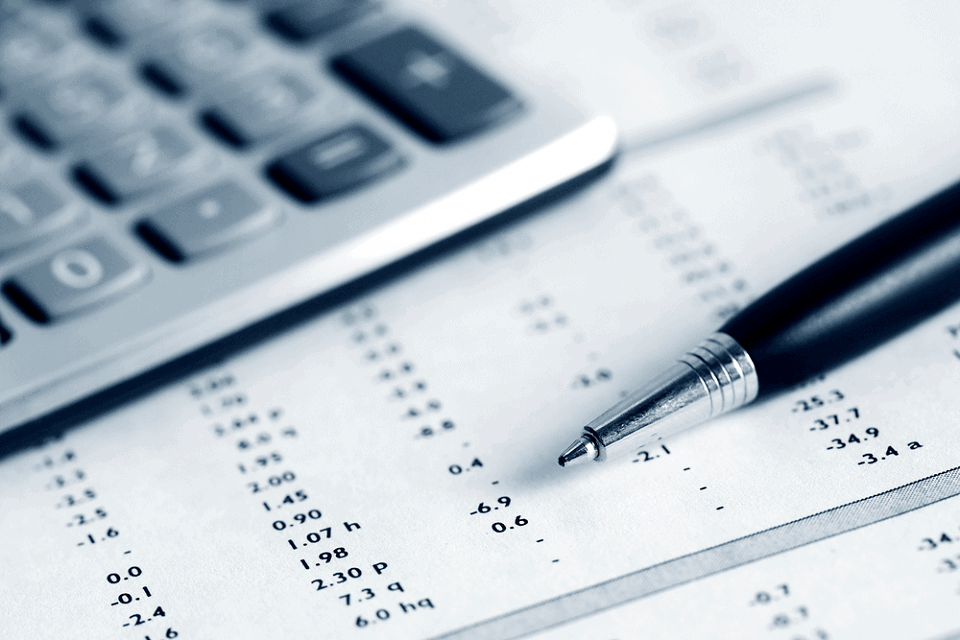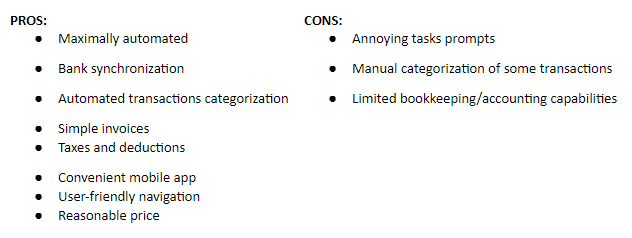Content
- What Is A Balance Sheet Used For?
- How Do You Calculate Shareholders Equity?
- What Is Return On Equity? How To Calculate Roe To Evaluate A Company’s Profitability
- How To Calculate The Total Of Unrestricted & Restricted Retained Earnings
- Stockholders Equity On The Balance Sheet
- Which Transactions Affect Retained Earnings?

The recorded amounts of certain assets are not adjusted to reflect changes in their market value, such as fixed assets. Charlene Rhinehart is an expert in accounting, banking, investing, real estate, and personal finance. She is a CPA, CFE, Chair of the Illinois CPA Society Individual Tax Committee, and was recognized as one of Practice Ignition’s Top 50 women in accounting. Andrew Bloomenthal has 20+ years of editorial experience as a financial journalist and as a financial services marketing writer. The Best Online Payroll Services of 2021 Our team has compared the best online payroll services… Stockholders’ equity has a few components, each with its own value and meaning.
For companies that aren’t public, the statement of stockholder equity is often considered the owner’s equity. In short, the net income is the money left after you subtract expenses and deductions from the total profit. In this case, profit is the amount of money made after subtracting the cost of operations. This is often referred to as “additional paid-in capital” or “contributed capital in excess of par” and is an amount that investors paid above the par value of stocks for a company.
This section includes items like translation allowances on foreign currency and unrealized gains on securities. Financial Intelligence takes you through all the financial statements and financial jargon giving you the confidence to understand what it all means and why it matters. Ask questions and participate in discussions as our trainers teach you how to read and understand your financial statements and financial position. When a corporation sells some of its authorized shares, the shares how to find stockholders equity are described as issued shares. The number of issued shares is often considerably less than the number of authorized shares. When a business applies for incorporation to a secretary of state, its approved application will specify the classes of stock, the par value of the stock, and the number of shares it is authorized to issue. When its articles of incorporation are prepared, a business will often request authorization to issue a larger number of shares than what is immediately needed.
Both total assets and total liabilities will be listed on the balance sheet. Current assets are generally liquid, or those which could be easily converted into cash in the short term, such as accounts receivable and inventory. Long-term assets include intangibles like intellectual property and patents, along with property, plant, and equipment and investments. Retained earnings, also known as accumulated profits, represents the cumulative business earnings minus dividends distributed to shareholders. This formula is known as the investor’s equation where you have to compute the share capital and then ascertain the retained earnings of the business. Non-current assets refer to those assets that cannot be liquidated in the short term.
- The EPS formula does not include preferred dividends for categories outside of continued operations and net income.
- Others try to estimate the next year’s dividend and use it to derive a prospective dividend yield.
- Then each of the dilutive securities are ranked based on their effects, from most dilutive to least dilutive and antidilutive.
- We now offer 10 Certificates of Achievement for Introductory Accounting and Bookkeeping.
- ROEs for small businesses are considerably different from those of publicly traded companies.
For small business owners, the complexity of the statement of stockholders’ equity can be complex and often intimidating. The par value is usually a small amount, such as $0.01 per share. If you have 100 shares at $0.01 par per share, the total par value would be $1. However, if you paid the company $50 for those 100 shares, you are paid in excess of the par value. The excess, in this case $49, is recorded as additional paid-in capital. Paid-in capital only occurs when you purchase stock directly from the company. If you purchase stock from a third party on a stock exchange, your payment goes to the third party; so, this does not create any additional paid-in capital.
What Is A Balance Sheet Used For?
However, the dividend may, under some circumstances, be passed or reduced. The yield is the ratio of the annual dividend to the current market price, which will vary. Unlike preferred stock, there is no stipulated dividend for common stock.

The par value of the stock is in some cases set at 1 cent or $1, and often has little relation to its actual value, so additional paid-in capital is often the bulk of the shareholders’ equity. The denominator consists of average common stockholders’ equity which is equal to average total stockholders’ equity less average preferred stockholders equity. There are a few key components to stockholder’s equity calculations that are worth mentioning. Share capital, also known as paid-in capital, is the amount of money invested by shareholders into a business. It is considered an asset when calculating total stockholder’s equity, in addition to retained earnings. However, treasury shares, which are shares that have been repurchased and retained by the company, fall under the company’s liabilities when calculating, as they detract from a company’s total equity. The stockholders’ equity, also known as shareholders’ equity, represents the residual amount that the business owners would receive after all the assets are liquidated and all the debts are paid.
How Do You Calculate Shareholders Equity?
Walmart Inc.’s current liabilities increased from 2019 to 2020 and from 2020 to 2021. Long-term liabilities Amount of obligation due after one year or beyond the normal operating cycle, if longer. Walmart Inc.’s long-term liabilities increased from 2019 to 2020 but then slightly decreased from 2020 to 2021. Total liabilities Sum of the carrying amounts as of the balance sheet date of all liabilities that are recognized. Liabilities are probable future sacrifices of economic benefits arising from present obligations of an entity to transfer assets or provide services to other entities in the future. Walmart Inc.’s total liabilities increased from 2019 to 2020 and from 2020 to 2021.
How to Calculate Ending Stockholders’ Equity – Motley Fool
How to Calculate Ending Stockholders’ Equity.
Posted: Fri, 23 Dec 2016 08:00:00 GMT [source]
This report is often overlooked in favor of simply considering the income statement. A company can improve its profit margins by making more money on each unit it sells.
What Is Return On Equity? How To Calculate Roe To Evaluate A Company’s Profitability
Assets that can be converted to cash within a year are called current assets, while other assets are long-term assets. Investors and analysts use the return on stockholders’ equity formula to gauge a company’s performance. They expect to see the business generate an adequate return on shareholders’ investment based on the risks involved and the growth rate. The amount of your total liabilities equals the sum of the items listed in the liabilities section of your balance sheet. These items include actual dollar amounts you owe, such as accounts payable, notes payable and deferred taxes. They also include upfront payments for services or products you have yet to provide.
How to Calculate Stockholders’ Equity for a Balance Sheet – Motley Fool
How to Calculate Stockholders’ Equity for a Balance Sheet.
Posted: Wed, 19 Oct 2016 07:00:00 GMT [source]
This certificate is known as a stock certificate, capital stock, or stock. Similarly, if the company is not doing good and not generating profit, then the value of shares will decrease, and shareholders will lose their money.
How To Calculate The Total Of Unrestricted & Restricted Retained Earnings
Low ROE means that the company earns relatively little compared to its shareholder’s equity. The key to value investing is developing a knack for spotting undervalued companies. The value investor is looking for hidden gems — companies with solid management, good financial performance, and relatively low stock price. “EisnerAmper” is the brand name under which EisnerAmper LLP and Eisner Advisory Group LLC provide professional services. EisnerAmper LLP and Eisner Advisory Group LLC practice as an alternative practice structure in accordance with the AICPA Code of Professional Conduct and applicable law, regulations and professional standards. Eisner Advisory Group LLC and its subsidiary entities are not licensed CPA firms. The entities falling under the EisnerAmper brand are independently owned and are not liable for the services provided by any other entity providing services under the EisnerAmper brand.
What is full goodwill method?
Under the full goodwill method, goodwill arising in a business combination is calculated as the difference between the sum of the purchase consideration paid by the parent and the fair value of non-controlling interest, and the fair value of the acquiree’s net identifiable assets.
Stockholder equity is essentially the value of a stock issuing company that belongs to its shareholders. For investors, this sheet is a valuable indicator of how a business’s activities are contributing to the value of shareholders’ interests. Johnson notes that one easy — but risky — way for a profitable company to increase ROE is to borrow money.
Stockholders Equity On The Balance Sheet
Add together all liabilities, which should also be listed for the accounting period. Unrealized gains and losses are the changes in the value of an investment that has not yet been sold for either a profit or loss.
Variations of the debt-to-equity ratio look only at long-term debt, to avoid fluctuations due to short-term obligations on the company’s balance sheet. This can be a red flag for investors, since it means that unless something changes, there will be little left for them after the company resolves its liabilities. This situation usually arises if a company has lost money or been forced to take on excess debt to pay its bills. There are two main ways to utilize the information gained through stockholder’s equity. The first is through personal investing, or any money an individual wishes to invest in a business to purchase stock. The second is financial modelling, which is a tool used by businesses to asses the success of the company.
Retained Earnings
They have voting rights; they can create an obstacle for management to make the decision. It doesn’t create any obligation to pay a fixed rate of dividend. Short Term BorrowingsShort-term loans are defined as borrowings undertaken for a short period to meet immediate monetary requirements. For freelancers and SMEs in the UK & Ireland, Debitoor adheres to all UK & Irish invoicing and accounting requirements and is approved by UK & Irish accountants. Try it risk-free It only takes a few minutes to setup and you can cancel any time.
However, stockholders’ equity is not the only measure of a company’s financial health. Thus, if you want to make a proper analysis of the company, you must use other metrics to understand the complete picture. Stockholders’ equity consists of share capital, retained earnings, net income, and dividends.
It can also be called “owners’ equity” or “shareholders’ equity.” It can be found on a firm’s balance sheet and financial statements, along with data on assets and liabilities. The par value of a share of stock is sometimes defined as the legal capital of a corporation. However, some states allow corporations to issue shares with no par value.

If a state requires a par value, the value of common stock is usually an insignificant amount that was required by state laws many years ago. If the common stock has a par value, then whenever a share of stock is issued the par value is recorded in a separate stockholders’ equity account in the general ledger. Any proceeds that exceed the par value are credited to another stockholders’ equity account.

Such shares carry voting rights and are shown under owner’s equity in the liability side of the balance sheet of the company. Retained earnings – the cumulative earnings of the business, minus any dividends paid to shareholders. Return on equity is a ratio, usually expressed as a percentage, that measures the profitability of a business in relation to the equity that shareholders have invested in the company. It shows how well the company’s management has been able to utilize its equity to create profits. The total stockholders’ equity for a given period represents the total at the end of the period. To find the beginning stockholders’ equity for that period, look at the balance sheet for the preceding period. Treasury stock is not an asset, it’s a contra-stockholders’ equity account, that is to say it is deducted from stockholders’ equity.
U.S. newspaper and Web listings of common stocks apply a somewhat different calculation. They report the latest quarterly dividend multiplied by 4 divided by the current price. Others try to estimate the next year’s dividend and use it to derive a prospective dividend yield. Such a scheme is used for the calculation of the FTSE UK Dividend+ Index. Preferred share dividend yield is the dividend payments on preferred shares are set out in the prospectus.
Author: Maggie Kate Fitzgerald

